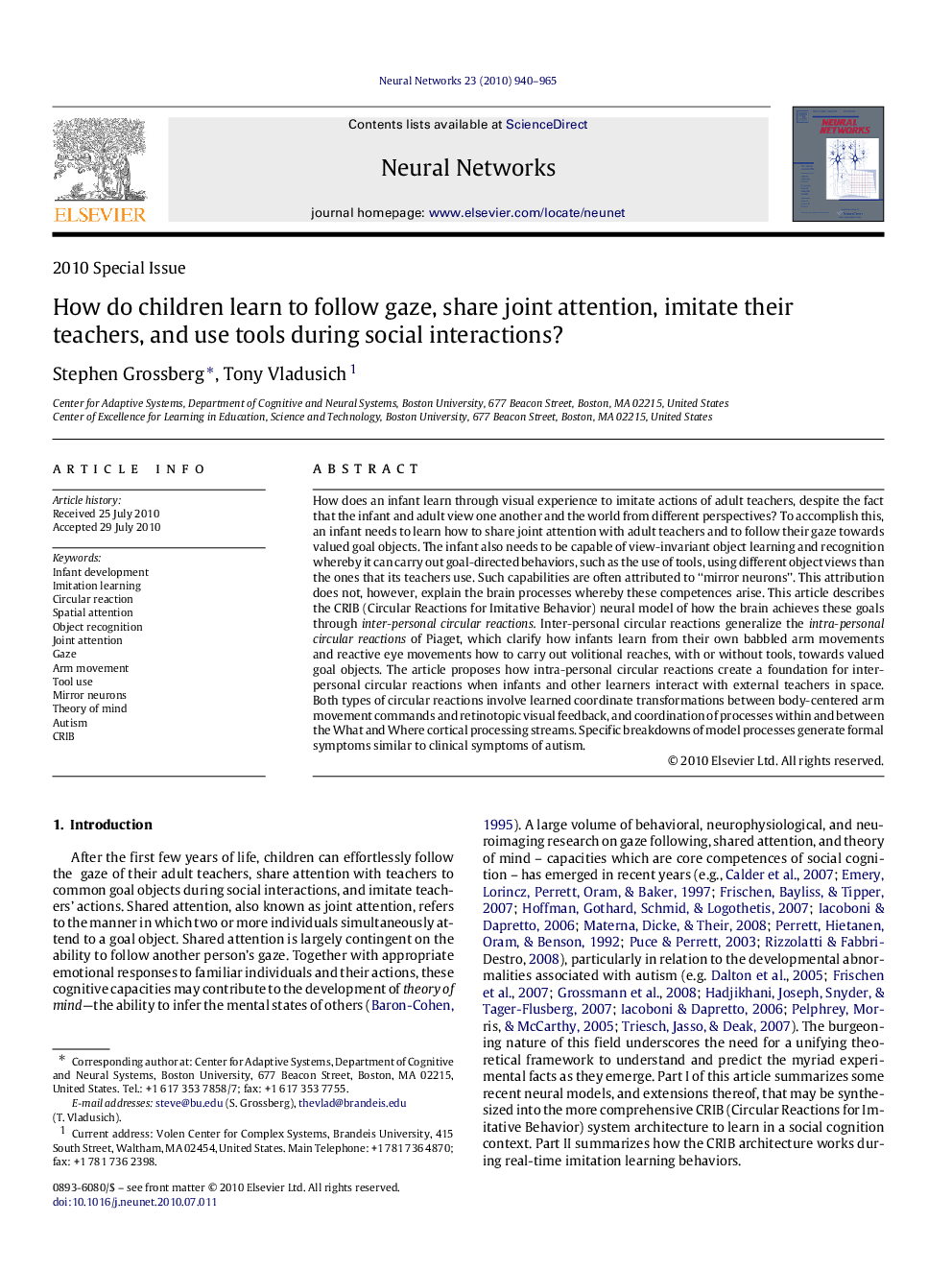| کد مقاله | کد نشریه | سال انتشار | مقاله انگلیسی | نسخه تمام متن |
|---|---|---|---|---|
| 404422 | 677424 | 2010 | 26 صفحه PDF | دانلود رایگان |

How does an infant learn through visual experience to imitate actions of adult teachers, despite the fact that the infant and adult view one another and the world from different perspectives? To accomplish this, an infant needs to learn how to share joint attention with adult teachers and to follow their gaze towards valued goal objects. The infant also needs to be capable of view-invariant object learning and recognition whereby it can carry out goal-directed behaviors, such as the use of tools, using different object views than the ones that its teachers use. Such capabilities are often attributed to “mirror neurons”. This attribution does not, however, explain the brain processes whereby these competences arise. This article describes the CRIB (Circular Reactions for Imitative Behavior) neural model of how the brain achieves these goals through inter-personal circular reactions. Inter-personal circular reactions generalize the intra-personal circular reactions of Piaget, which clarify how infants learn from their own babbled arm movements and reactive eye movements how to carry out volitional reaches, with or without tools, towards valued goal objects. The article proposes how intra-personal circular reactions create a foundation for inter-personal circular reactions when infants and other learners interact with external teachers in space. Both types of circular reactions involve learned coordinate transformations between body-centered arm movement commands and retinotopic visual feedback, and coordination of processes within and between the What and Where cortical processing streams. Specific breakdowns of model processes generate formal symptoms similar to clinical symptoms of autism.
Journal: Neural Networks - Volume 23, Issues 8–9, October–November 2010, Pages 940–965